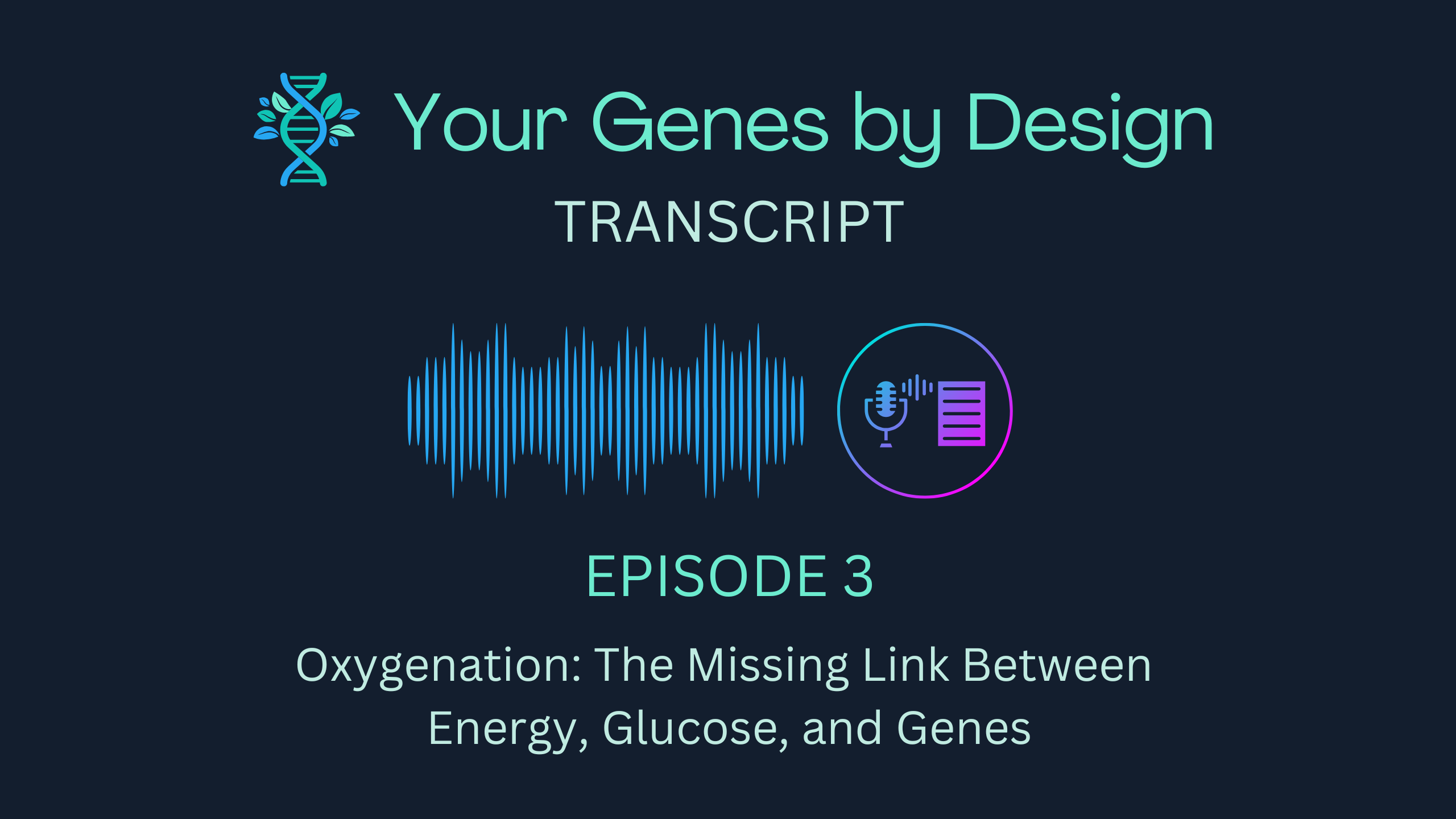
[00:31 Oxygenation Explained]
Hi, thanks so much for joining me today. I’m Lauri.
This is the third episode in our seven-episode Glucose & Insulin by Design series.
Today we’re going to look at something that doesn’t usually come up in everyday health conversations — oxygenation. It’s something I started thinking about a few weeks ago and how it connects to glucose and insulin.
Oxygenation is how efficiently your body uses oxygen inside your cells, and it shapes everything from daily energy and glucose balance to mental clarity. Most people think of oxygen as an automatic process — we breathe in, our lungs do their job, and we breathe out. But the real story happens deeper inside the mitochondria, where oxygen and nutrients meet to create energy.
When oxygen use is efficient, glucose is burned cleanly for fuel. When it’s not, energy production slows, oxidative stress builds up, and glucose tends to linger in the blood instead of being used. That’s why oxygenation ties so closely to insulin sensitivity and metabolic health.
[01:40 The Gene Trio]
There are several genes that influence how well this process occurs. Let’s look at three of them.
PPARGC1A supports mitochondrial creation and maintenance — influencing how many mitochondria your cells produce and how effectively they turn nutrients into energy.
SOD2 helps neutralize free radicals formed when oxygen is used to make energy.
When SOD2 function is lower, cells can become more sensitive to stress or inflammation.
NOS3 regulates nitric-oxide production, which keeps blood vessels flexible so oxygen can circulate freely.
Together, these genes influence how easily oxygen reaches your cells and how efficiently that oxygen turns nutrients into ATP, your body’s usable energy.
[03:00 Midlife Shifts]
So why does this matter after 45?
As estrogen and thyroid activity shift, mitochondria naturally become less efficient.
You might notice this as lower stamina, slower recovery, or an afternoon energy dip even when you’re eating well.
If you also have variants in PPARGC1A or SOD2, your baseline oxygen use might be a little slower. But lifestyle makes the biggest difference because mitochondria are adaptive. They respond to signals like movement, nutrition, sleep, and stress balance — not just your genetic blueprint.
If you’ve ever felt your stamina drop or noticed longer recovery after a workout, that’s your oxygen efficiency at work. Genes like PPARGC1A, SOD2, and NOS3 help determine how effectively your cells use oxygen to make energy — and that’s something you can improve through consistent habits.
[03:45 Everyday Supports]
Here are a few ways to support oxygenation in your body — and you might already be doing some of them:
1️⃣ Move often. Even light movement, like a brisk walk or stretching, increases circulation and helps muscles absorb oxygen and glucose directly.
2️⃣ Support with nutrients. Magnesium, CoQ10, vitamin C, and omega-3s all play roles in mitochondrial efficiency.
3️⃣ Breathe deeper. Slow nasal breathing boosts oxygen uptake and helps your nervous system shift toward recovery.
4️⃣ Prioritize recovery. Consistent, good-quality sleep restores mitochondrial balance and clears the byproducts of oxygen use.
[04:45 Takeaway & Closing]
Oxygenation isn’t just about breathing — it’s about how efficiently your body turns oxygen and nutrients into energy. Genes like PPARGC1A, SOD2, and NOS3 help determine how well that system runs, but your daily habits decide how it performs.
When you move regularly, manage stress, and nourish your mitochondria, you’re not just improving endurance — you’re improving how smoothly glucose converts into usable energy. That’s what creates steady focus, stable energy, and fewer crashes throughout the day.
Oxygen and glucose work together — two parts of the same system that keep your energy steady and your metabolism running smoothly.
If this episode helped you understand how oxygen connects to energy and glucose, follow Your Genes by Design for more short, science-based insights for life after 45.
Because understanding your genes isn’t about prediction — it’s about using that insight to support how your body is designed to work.
